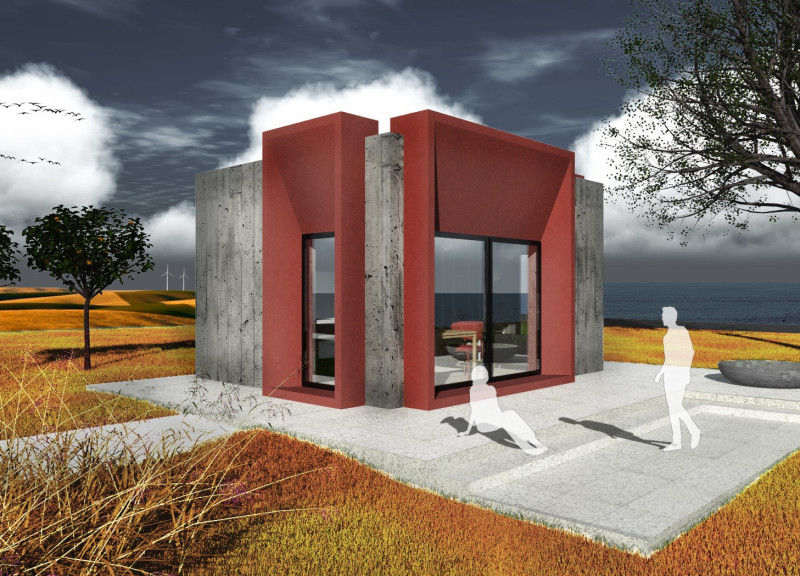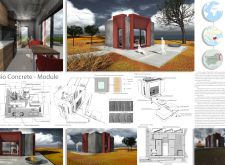5 key facts about this project
The Bio Concrete Module is an innovative response to the pressing issue of water shortages in the Black Sea region of Bulgaria. It integrates compact living solutions that include bathrooms, kitchens, sleeping areas, and workspaces. The design prioritizes efficient use of available space while encouraging sustainable living practices. The overall concept aims to address the challenges posed by climate change in a straightforward manner.
Materials
Precast self-healing concrete panels are a central component of the design. These panels are made up of several layers, including concrete wythes, reinforcement, insulation, and connectors. This multi-layered system enhances the building's structural strength while introducing a self-healing capability. When cracks develop, the concrete can produce limestone to fill these gaps, reducing the need for ongoing maintenance and extending the building’s lifespan.
Water Management System
The project features a thoughtful water-saving system that aims to lessen reliance on external resources. This includes a solar water heating system and clean water pipes, along with two solar electric panels. The design also incorporates a roof designed for collecting rainwater, a main water tank, and various irrigation elements. Together, these systems enable efficient water use and support the sustainable focus of the design.
Geographical Context
Located in an area that faces significant environmental challenges, the Bio Concrete Module is relevant not just for Bulgaria, but also for neighboring countries like Romania, Serbia, Greece, and Turkey. The design takes into account local climate conditions. It seeks to promote resource conservation and respond to the practical needs of the region.
The design balances functionality and aesthetics without complicating the user experience. Practical features, such as the integration of water collection and solar energy systems, combine to create a living environment that meets modern demands. The module offers a useful example of how future residential developments can embrace sustainability while remaining accessible and efficient.



















































